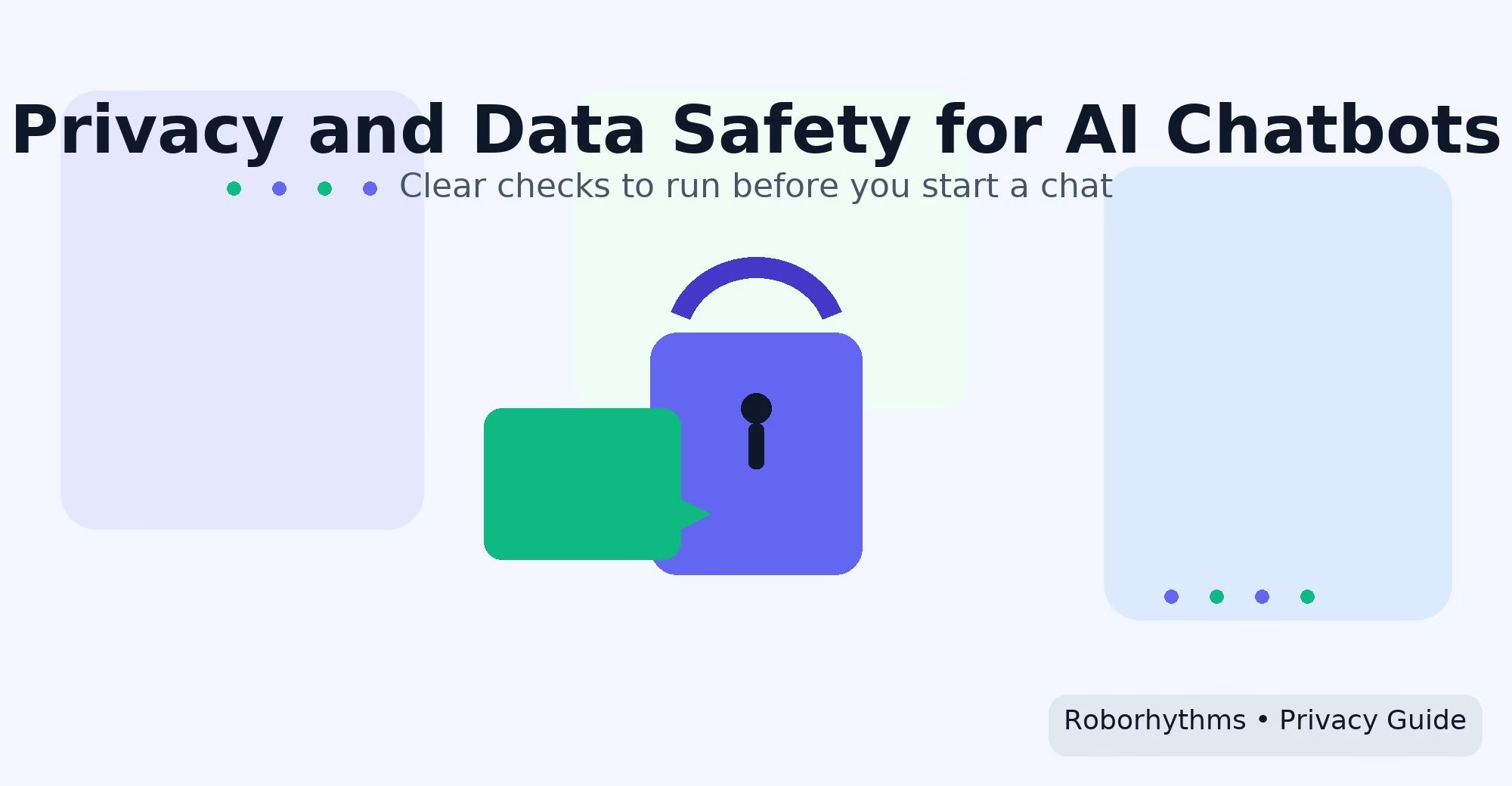Before You Chat With AI Chatbots, Check These Privacy Settings
People worry for good reason. News about chat titles appearing in strangers’ histories and platforms quietly changing training defaults has made private talk feel less private.
We treat chatbots like notebooks, then realize those notes can be stored, routed across regions, and scanned to improve products.
Trust breaks when the rules shift midstream or the fine print hides retention windows that outlive the conversation.
Our goal here is simple. We’ll strip the topic down to what actually matters at the moment you open a chat window and type something personal or sensitive.
What you’ll learn
-
What data logging typically includes on AI chat platforms
-
How to scan a privacy policy fast and spot the gotchas
-
Where to find training opt-outs, retention settings, and data location notes
-
Case studies of clear vs vague policies from popular chatbots
-
A practical checklist of questions to ask before you trust a chatbot
-
Simple habits that lower your risk without killing your workflow
-
How we’ll link to our hub to compare privacy scores across chatbot reviews
What data logging means on AI platforms
Chat platforms capture more than the words you type. Inputs, files, images, and voice notes often land in logs tied to your account or device.
Usage data travels with every session. Typical fields include IP address, device model, browser version, timestamps, and features used during a chat.
Derived data gets added on top. Safety systems label content for abuse prevention, while personalization services link session signals to make responses feel tailored.
Vendors also keep short-term operational copies. These help with reliability and security, even when a history toggle is off or a temporary mode is on.
How to read a privacy policy fast
Start with training controls. Look for a clear switch that stops your chats from being used to improve models without breaking basic features like history.
Scan for retention windows. Policies should say how long normal chats stay, how long temporary chats linger, and whether backups extend that period.
Check data location and transfers. Policies should name processing regions and the legal basis for cross-border moves, plus who the data controller is.
Confirm your rights and the workflow. You want export, deletion, and objection pathways you can actually use, with a support link or portal you can reach.
Watch for special cases. Voice features, image uploads, or embedded assistants inside other apps can run on different settings than plain text.
Case studies of clear vs vague policies
OpenAI sets a decent baseline for consumer controls. Training can be turned off while keeping chat history, exports are available, and enterprise admins get stricter retention settings.
A past incident tied to a third-party library put titles from some chats in the wrong place, which pushed the company to add clearer explanations and stronger safeguards.
Anthropic’s consumer policy shift added a straight choice for training and spelled out the impact on retention.
Opting into training increases how long data may be kept. Opting out keeps a shorter window.
Incognito sessions sit on the cautious side, with memory features separated so users don’t accidentally persist more than they planned.
Google’s Gemini approach hinges on account activity settings. Temporary chats avoid training and personalization, yet a short operational copy still exists for abuse prevention and reliability.
Audio features add their own control.
Character.AI and Replika show the other side of the spectrum on uncensored AI chatbots.
Character.AI warns users not to share sensitive information and states that data helps improve services, without a simple global training opt-out surfaced for regular users.
Replika has faced regulator scrutiny, with penalties in at least one EU country for policy and legal basis issues.
Checklist before trusting a chatbot
-
Can I turn off training without breaking the way I normally use the product?
-
What are the retention windows for normal chats, temporary chats, and backups?
-
Where is the data processed and under what transfer mechanism?
-
How do I export and delete, and what happens to data already used for improvement?
-
Are voice, images, and files governed by the same rules as text?
-
Has the vendor published incident reports or regulator findings in the last two years?
Clear answers to these questions save headaches later.
Vendors that state timelines, processing locations, and opt-outs up front tend to handle the rest of privacy better too.
A product that buries these details usually buries other risks as well.
How to reduce risk while you chat
- Share the bare minimum. Names, addresses, account numbers, medical details, and employer secrets do not belong in a consumer chatbot.
Replace real people and companies with neutral placeholders and strip out unique identifiers before pasting.
- Flip privacy switches before the first prompt. Disable model training where possible, turn off activity history if you can spare it, and prefer temporary or incognito modes for sensitive brainstorming.
Short operational copies may still exist, so treat these modes as guardrails, not a vault.
- Separate work from personal use. Keep a personal account for casual chats and a dedicated work account that follows company policy.
Enterprise or team plans often add retention controls, audit logs, and training opt-outs that consumer plans lack.
- Handle files with extra care. Redact PDFs and images locally, avoid uploading raw spreadsheets with personal data, and prefer sharing summaries over source documents.
Store your notes in your own drive rather than relying on platform history to remember them.

